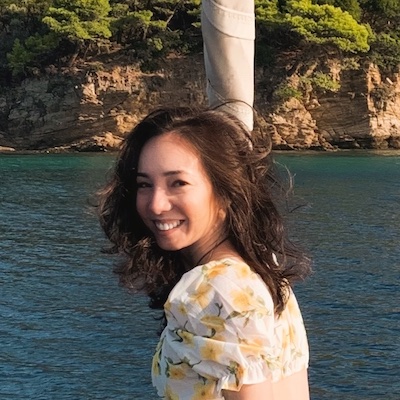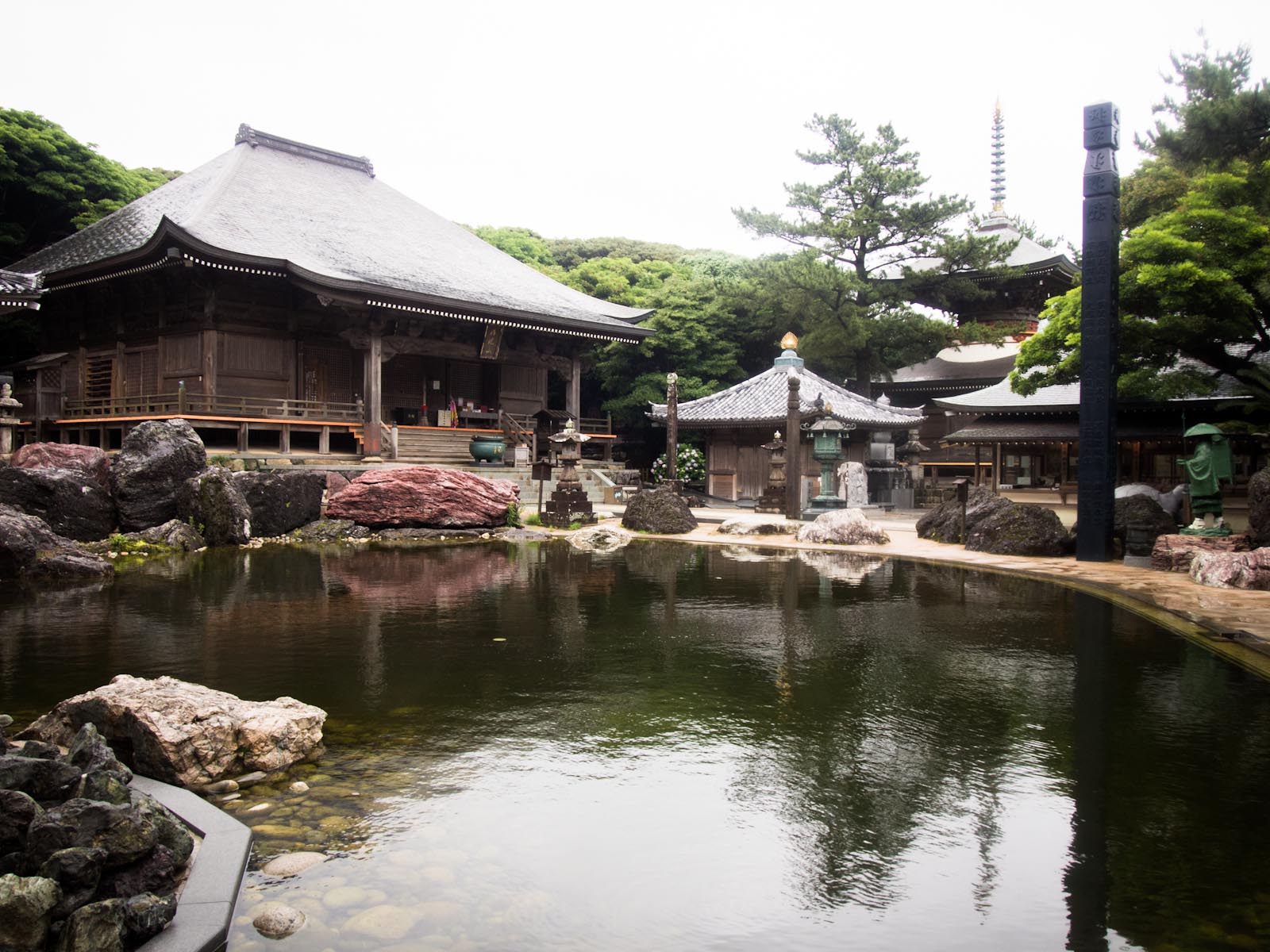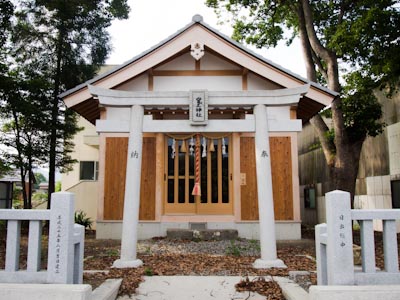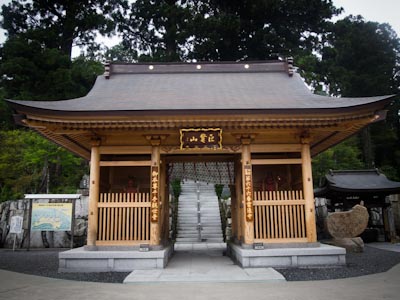Temples, Shrines, and Religions of Shikoku
88 Temples of the Shikoku Pilgrimage
The Shikoku Pilgrimage is completed by visiting all 88 temples around the island of Shikoku. The main temples of the pilgrimage form a circular shape around the island of Shikoku. Some sit within Shikoku’s bustling cities and villages; others overlook beautiful coastlines; and still others require strenuous hikes to reach them on the tops of holy mountains. Visiting each of them is both a humbling and invigorating task. You can see all temples of the Shikoku Pilgrimage on our interactive map.
Out of the 88 official temples, 27 are located near the coast or at sea level, and 61 are in the mountains. With an elevation of 972 meters (3,189 feet), Temple 66 (雲辺寺) sits at the highest point of the pilgrimage.
List of 88 Official Temples
| Number | Name | Japanese Name | Mountain Name (Sango) | Link |
|---|---|---|---|---|
| 1 | Ryozenji | 霊山寺 | Jikuwazan (竺和山) | View details |
| 2 | Gokurakuji | 極楽寺 | Nisshouzan (日照山) | View details |
| 3 | Konsenji | 金泉寺 | Kikouzan (亀光山) | View details |
| 4 | Dainichiji | 大日寺 | Kokuganzan (黒巌山) | View details |
| 5 | Jizoji | 地蔵寺 | Mujinzan (無尽山) | View details |
| 6 | Anrakuji | 安楽寺 | Onsenzan (温泉山) | View details |
| 7 | Jurakuji | 十楽寺 | Koumyouzan (光明山) | View details |
| 8 | Kumadaniji | 熊谷寺 | Fumyouzan (普明山) | View details |
| 9 | Horinji | 法輪寺 | Shoukakuzan (正覚山) | View details |
| 10 | Kirihataji | 切幡寺 | Tokudozan (得度山) | View details |
| 11 | Fujiidera | 藤井寺 | Kongouzan (金剛山) | View details |
| 12 | Shosanji | 焼山寺 | Marozan (摩廬山) | View details |
| 13 | Dainichiji | 大日寺 | Oogurizan (大栗山) | View details |
| 14 | Jorakuji | 常楽寺 | Zeijuzan (盛寿山) | View details |
| 15 | Awa Kokubunji | 阿波国分寺 | Yakuouzan (薬王山) | View details |
| 16 | Kannonji | 観音寺 | Kouyouzan (光耀山) | View details |
| 17 | Idoji | 井戸寺 | Rurizan (瑠璃山) | View details |
| 18 | Onzanji | 恩山寺 | Boyouzan (母養山) | View details |
| 19 | Tatsueji | 立江寺 | Kyouchizan (橋池山) | View details |
| 20 | Kakurinji | 鶴林寺 | Ryuujuzan (霊鷲山) | View details |
| 21 | Tairyuji | 太龍寺 | Shashinzan (舎心山) | View details |
| 22 | Byodoji | 平等寺 | Hakusuizan (白水山) | View details |
| 23 | Yakuoji | 薬王寺 | Iouzan (医王山) | View details |
| 24 | Hotsumisakiji | 最御崎寺 | Murotozan (室戸山) | View details |
| 25 | Shinshoji | 津照寺 | Houjuzan (宝珠山) | View details |
| 26 | Kongochoji | 金剛頂寺 | Ryuuzuzan (龍頭山) | View details |
| 27 | Konomineji | 神峰寺 | Chikurinzan (竹林山) | View details |
| 28 | Dainichiji | 大日寺 | Houkaizan (法界山) | View details |
| 29 | Tosa Kokubunji | 土佐国分寺 | Manizan (摩尼山) | View details |
| 30 | Zenrakuji | 善楽寺 | Dodozan (百々山) | View details |
| 31 | Chikurinji | 竹林寺 | Godaisan (五台山) | View details |
| 32 | Zenjibuji | 禅師峰寺 | Hachouzan (八葉山) | View details |
| 33 | Sekkeiji | 雪蹊寺 | Koufukuzan (高福山) | View details |
| 34 | Tanemaji | 種間寺 | Motoozan (本尾山) | View details |
| 35 | Kiyotakidera | 清滝寺 | Iouzan (醫王山) | View details |
| 36 | Shoryuji | 青竜寺 | Tokkouzan (独鈷山) | View details |
| 37 | Iwamotoji | 岩本寺 | Fujiisan (藤井山) | View details |
| 38 | Kongofukuji | 金剛福寺 | Sadasan (蹉跎山) | View details |
| 39 | Enkoji | 延光寺 | Shakkizan (赤亀山) | View details |
| 40 | Kanjizaiji | 観自在寺 | Heijouzan (平城山) | View details |
| 41 | Ryukoji | 竜光寺 | Inarizan (稲荷山) | View details |
| 42 | Butsumokuji | 佛木寺 | Ikkazan (一カ山) | View details |
| 43 | Meisekiji | 明石寺 | Genkouzan (源光山) | View details |
| 44 | Daihoji | 大宝寺 | Sugouzan (菅生山) | View details |
| 45 | Iwayaji | 岩屋寺 | Kaiganzan (海岸山) | View details |
| 46 | Joruriji | 浄瑠璃寺 | Iouzan (医王山) | View details |
| 47 | Yasakaji | 八坂寺 | Kumanozan (熊野山) | View details |
| 48 | Sairinji | 西林寺 | Seiryuuzan (清滝山) | View details |
| 49 | Jodoji | 浄土寺 | Sairinzan (西林山) | View details |
| 50 | Hantaji | 繁多寺 | Higashiyama (東山) | View details |
| 51 | Ishiteji | 石手寺 | Kumanozan (熊野山) | View details |
| 52 | Taisanji | 太山寺 | Ryuuunzan (龍雲山) | View details |
| 53 | Enmyoji | 圓明寺 | Sugazan (須賀山) | View details |
| 54 | Enmeiji | 延命寺 | Chikamizan (近見山) | View details |
| 55 | Nankobo | 南光坊 | Bekkuzan (別宮山) | View details |
| 56 | Taisanji | 泰山寺 | Kinrinzan (金輪山) | View details |
| 57 | Eifukuji | 栄福寺 | Futouzan (府頭山) | View details |
| 58 | Senyuji | 仙遊寺 | Sareizan (作礼山) | View details |
| 59 | Iyo Kokubunji | 伊予国分寺 | Konkouzan (金光山) | View details |
| 60 | Yokomineji | 横峰寺 | Ishizuchisan (石鈇山) | View details |
| 61 | Koonji | 香園寺 | Sendansan (栴檀山) | View details |
| 62 | Hojuji | 宝寿寺 | Tenyouzan (天養山) | View details |
| 63 | Kichijoji | 吉祥寺 | Mikkyouzan (密教山) | View details |
| 64 | Maegamiji | 前神寺 | Ishizuchisan (石鈇山) | View details |
| 65 | Sankakuji | 三角寺 | Yureizan (由霊山) | View details |
| 66 | Unpenji | 雲辺寺 | Kyogouzan (巨鼇山) | View details |
| 67 | Daikoji | 大興寺 | Komatsuozan (小松尾山) | View details |
| 68 | Jinnein | 神恵院 | Shippouzan (七宝山) | View details |
| 69 | Kannonji | 観音寺 | Shippouzan (七宝山) | View details |
| 70 | Motoyamaji | 本山寺 | Shippouzan (七宝山) | View details |
| 71 | Iyadaniji | 弥谷寺 | Kengozan (剣五山) | View details |
| 72 | Mandaraji | 曼荼羅寺 | Gahaishizan (我拝師山) | View details |
| 73 | Shusshakaji | 出釈迦寺 | Gahaishizan (我拝師山) | View details |
| 74 | Koyamaji | 甲山寺 | Iouzan (医王山) | View details |
| 75 | Zentsuji | 善通寺 | Gogakuzan (五岳山) | View details |
| 76 | Konzoji | 金倉寺 | Keisokuzan (鶏足山) | View details |
| 77 | Doryuji | 道隆寺 | Soutazan (桑多山) | View details |
| 78 | Goshoji | 郷照寺 | Bukkouzan (仏光山) | View details |
| 79 | Tennoji | 天皇寺 | Kinkazan (金華山) | View details |
| 80 | Sanuki Kokubunji | 讃岐国分寺 | Hakugyuuzan (白牛山) | View details |
| 81 | Shiromineji | 白峯寺 | Ryoushouzan (綾松山) | View details |
| 82 | Negoroji | 根香寺 | Aominesan (青峰山) | View details |
| 83 | Ichinomiyaji | 一宮寺 | Shingouzan (神毫山) | View details |
| 84 | Yashimaji | 屋島寺 | Nanmenzan (南面山) | View details |
| 85 | Yakuriji | 八栗寺 | Gokenzan (五剣山) | View details |
| 86 | Shidoji | 志度寺 | Fudarakusan (補陀洛山) | View details |
| 87 | Nagaoji | 長尾寺 | Fudarakusan (補陀洛山) | View details |
| 88 | Okuboji | 大窪寺 | Iouzan (医王山) | View details |
Shikoku’s temples can be clustered together or quite far apart. On some days, you may visit up to ten or more temples in a row. Other times, you may find yourself going days without visiting a single one. One should enjoy these times as a chance to soak in the journey.
The debate around why and how the official 88 temples were chosen (out of many more that claim to be associated with Kūkai and the pilgrimage) is an old one. The most common theory stems from the fact that in Buddhism, human beings are said to have 88 earthly desires, which are also sufferings as our passions lead to unwholesome actions. By visiting the 88 holy sites on the Shikoku Pilgrimage, pilgrims are symbolically exterminating their sufferings.
In Shikoku, the standard pilgrimage route begins at Ryozenji, the first temple. The vast majority of pilgrims walk clockwise around the island, in numerical order. This is considered the “normal” way, but it is not actually necessary to visit every temple in order. In fact, it is not even necessary to start at Temple 1 and finish at Temple 88, so long as you eventually visit all the temples.

An example: I visited Temple 61 through Temple 63 before beginning the long hike up to Temple 60. The routes just worked out better for my accommodation plans. Since Temple 60 was in the mountains, I wanted to tackle those that were in the city before they closed, and hike early in the morning the next day.
If you start from Temple 1, then your final destination is Temple 88. When you’ve made it to Temple 88 from Temple 1, you’ve arrived at “kechigansho” (結願所), or the place where your vows and wishes are fulfilled.
This is not the end of the pilgrimage. After Temple 88, many pilgrims return to Temple 1 to “finish the circle”.
Many pilgrims do not complete the full pilgrimage in one go. It can be hard to take so much time off work, and people of course have things to attend to back home. For this reason, you’ll often find pilgrims completing the loop one section at a time. This is especially common among domestic Japanese pilgrims, who do not have to travel internationally to reach Shikoku.

One pilgrim I met along the way saw her pilgrimage as a lifelong journey, and was completing it one prefecture at a time, but decades apart. Some pilgrims give up during the especially arduous portions of the trail, only to return later in life – especially during the difficult hike between Temple 11 and Temple 12 and the vast areas of wilderness in Kochi Prefecture, where temples are few and far between.
Bekkaku Temples
Although the Shikoku Pilgrimage is focused on the 88 officially designated Buddhist temples, there are hundreds of other temples (and many other religious sites) on the island of Shikoku. These temples are called “bangai (番外),” which literally means they are “outside the numbers” (not among the official 88). Among the bangai, there are 20 recognized “bekkaku (別格)” temples which are especially associated with the Shikoku Pilgrimage. Bekkaku and bangai temples are often impressive and worth visiting while you’re on the trail.
While pilgrims will run into a few of the bekkaku along the main routes, most require extra travel to get to. Visiting them is completely optional as the generally accepted way of “completing” the pilgrimage only refers to the 88 temples.
Just like the main 88 temples, one will still be able to receive a stamp (nōkyō) at each bekkaku. Some even provide lodging options. Information and locations of the 20 bekkaku can be found on our pilgrimage map, or in guidebooks and other online sources.
List of 20 Bekkaku Temples
| Number | Name | Japanese Name | Link |
|---|---|---|---|
| 1 | Taisanji | 大山寺 | View details |
| 2 | Dogakuji | 童学寺 | View details |
| 3 | Jigenji | 慈眼寺 | View details |
| 4 | Yasakaji | 八坂寺 | View details |
| 5 | Daizenji | 大善寺 | View details |
| 6 | Ryukoin | 龍光院 | View details |
| 7 | Shusekiji | 出石寺 | View details |
| 8 | Eitokuji | 永徳寺 | View details |
| 9 | Monjuin | 文珠院 | View details |
| 10 | Koryuji | 興隆寺 | View details |
| 11 | Shozenji | 正善寺 | View details |
| 12 | Enmeiji | 延命寺 | View details |
| 13 | Senryuji | 仙龍寺 | View details |
| 14 | Jofukuji | 常福寺 | View details |
| 15 | Hashikuraji | 箸蔵寺 | View details |
| 16 | Hagiharaji | 萩原寺 | View details |
| 17 | Kannoji | 神野寺 | View details |
| 18 | Kaiganji | 海岸寺 | View details |
| 19 | Kozaiji | 香西寺 | View details |
| 20 | Otakiji | 大瀧寺 | View details |
Okunoin (Inner Sanctuaries)
Each of the 88 temples have (or are associated with) an “okunoin,” or an inner sanctuary that houses a deity. Mount Kōya also has its own okunoin (the mausoleum where Kūkai is said to be resting).
Every Buddhist deity has a legend that can be related to the establishment and mission of its temple, and some bekkaku and bangai are actually the okunoin of one of the 88 temples. For example, at the okunoin of Temple 61 (Kōonji, 香園寺), Buddhist ascetics perform suigyō/mizugyō (水行), a meditative technique that involves sitting in the cold waters of a waterfall (or dousing oneself with buckets of freezing water) to achieve a higher level of spiritual awareness.
Each okunoin is detached from the main location of its parent temple. They are smaller (usually the size of a roadside shrine) and reside either on dedicated temple grounds or in the mountains.
Visiting okunoin is not a requisite to completing the pilgrimage. Although pilgrims seldom visit them, it is worth checking out at least one okunoin.
Roadside Shrines and Temples
Occasionally, you will encounter small wooden or stone shrines on the side of trails and roads. These mini shrines usually reflect the nature-worshiping roots of Shinto, which typically incorporate family values and agriculture. There are also Buddhist shrines (like the one pictured here).
Each roadside shrine represents a deity whose identity is depicted by the sculpture inside. A common figure is Jizō, the protector of travelers, women in childbirth, and children.
Religions in Shikoku
The two dominant religions in Japan are Buddhism and Shintoism. Compared to Shintoism, Buddhism has fewer religious rites and ritual practices, and places more emphasis on preaching and meditation. Although Buddhism was introduced in the year 552 and grew in popularity, Japan never saw a full conversion away from Shintoism, its indigenous religion. Despite turbulence throughout its storied history, Buddhism was gradually incorporated into Japanese culture and mixed with local folk religions.
Although the temples that make up the Shikoku 88 pilgrimage are all Shingon Buddhist temples (“otera,” お寺), you will often encounter Shinto shrines (“jinja,” 神社) along the way. The main feature distinguishing the two is the entrance:
Those entering Shinto shrines must pass through a wooden vermillion gate, called a “torii” (鳥居, pictured top left), while Buddhist temples have a “sanmon” (三門, pictured bottom right) as the entrance to their temple grounds. Pilgrims will encounter quite a few Shinto shrines along their pilgrimage (including a few famous ones!), which are definitely worth experiencing.







